
The Future of the Commonwealth Games Digital Learning Platform
Welcome to the seventh and final post in our series exploring imc’s project with Birmingham 2022 Commonwealth Games. We will wrap up by revealing the Commonwealth Games organising committee’s plans for their imc LMS at future games, including lessons learned and the benefits of their multi-game contract.
Following the final day of the Birmingham 2022 Commonwealth Games in early August 2022, the team for the Birmingham games will be disbanded. However, the story doesn’t end there. Beyond 2022, imc’s sports event LMS will be used for the 2026 and 2030 games, sticking with the sustainability theme running through the Commonwealth Games, meaning that the Commonwealth Games organising committee can build on the success of this year’s solution without having to start from scratch.

A sustainable LMS for future Commonwealth Games
The Commonwealth Games takes place every four years in a different part of the Commonwealth. The regular recurrence of these events makes it a perfect setup for the multi-game contract the Commonwealth Games has with imc. This means that rather than creating a brand-new LMS every four years, they will reuse as much as possible from the Birmingham 2022 Commonwealth Games.
In 2026, the Commonwealth Games will be held in Victoria, Australia, and the imc LMS will be passed to their team. This will make the job of the Victoria 2026 Commonwealth Games team significantly easier, as they won’t need to procure and build a new LMS, and they can learn from the Birmingham 2022 team to make the LMS as successful as possible.

Lessons learned
The Birmingham 2022 Commonwealth Games team had a relatively short amount of time to create a scalable LMS to support tens of thousands of users, so their timeframe will help the Victoria 2026 team establish how far in advance they should start working on the LMS. The plan for the first iteration of the Commonwealth Games LMS was to start small, with a view to making improvements with each games as needs changed.
Another piece of advice from the Birmingham 2022 team is to fully integrate the LMS with the workforce management system. The Birmingham 2022 LMS, B-Bright, communicates with Rosterfy, the workforce management system, but owing to the tight turnaround, it was not fully integrated. A benefit of the multi-game contract is that the Birmingham 2022 team can easily hand this knowledge over to the new Victoria 2026 team, which would not be possible under a traditional single-contract setup.

Reimagining the LMS for future Commonwealth Games
imc’s LMS will be particularly useful for Victoria 2026, because the games will be held across four regional sites (Geelong, Bendigo, Ballarat and Gippsland) in the state. The LMS will make it significantly easier to deliver training to volunteers, contractors and employees across the state, and the fact that the platform was built with flexibility and scalability at its core means that it can cater to any audience size at the next games.
The host of the 2030 games has not yet been decided, but this team will also benefit from the lessons learned from Birmingham 2022 and Victoria 2026. The mult-game contract means that imc will have full oversight of the ongoing project, and the Commonwealth Games won’t have to explain their requirements over and over again to new vendors.
Moreover, each Commonwealth Games has its own branding and approach to training volunteers. With their imc LMS, each future learning team will have the power to apply their own branding to the LMS, reconfigure anything they need and also keep anything they like from previous iterations.
The Commonwealth Games has chosen a sustainable, cost-effective and efficient approach to LMS procurement and development, and imc is proud to be their learning partner for many years to come.
More information
We hope you have enjoyed our deep dive into imc’s LMS for the Birmingham 2022 Commonwealth Games! Want to find out more? Get in touch today to discover how we can help you create a sustainable LMS to support your learning efforts long into the future.

A holistic learning management experience for Australia’s national rugby league
A rejuvenated approach to modernise NRL learning centre portal with a fully-integrated LMS that increased participation rates and positive learner feedback.

A podium spot with eLearning
Training is not only essential for the professional athletes, but their trainers, referees and crew members also need continuous professional development. We tell you how that works with eLearning.

an LMS RfP
Compiling an LMS requirements for proposal (RfP)
Are you looking to compile an LMS RfP requirements document to help choose the best training solution for your organisation’s needs?
With hundreds of learning management systems (LMS) on the market today, deciding which one is right for you can be a complicated process. A good Request for Proposal (RfP) can simplify your decision making process by starting off with a training needs and features checklist.
Your choices can then be whittled down to a shortlist of LMS solutions that meet your specific criteria, with a final decision based on which provider you most like and trust.

What's an RfP for learning management systems?
A request for proposal or RfP is a document put together by the client and sent to potential learning management system providers in order to start the conversation about suitability and generating a quote.
A good RfP will contain information about the organisation and its elearning goals, the number of people (sometimes including external partners and supply chain as well as employees) to be trained, existing technology infrastructure to be integrated into, and any other LMS needs and constraints.
LMS providers who feel they can meet these criteria can then send a proposal, and the client can form a shortlist of providers to progress conversations with, and from whom to make a final choice.
Benefits of an LMS request for proposal
One of the key benefits of an LMS request for proposal is that it ensures a level of objectivity in the procurement process. By starting with a checklist of essential, then nice to have features, the client can be more assured of suitability in a learning platform, rather than being overly swayed by slick sales presentations.
Before talking to a vendor, you can define your essential LMS requirements, before going on to list those that would be a bonus but that you may be willing to forego depending on price or strengths in your must-have criteria.
It’s really important to identify which criteria are truly essential to making an LMS work for your organisation, regardless of bells and whistles in nice to have areas. These LMS priorities will help to ensure the project does not fail.
Timescales and budgets
Does your project have a strict timescale and / or budget? If you have hard limits to work within, by making these clear within your RfP you can avoid any time-wasting discussions if a vendor simply can not meet them. It also prevents time and budget creep once a project is underway.
Because the RfP is an up-front piece of work that can be sent to multiple vendors (and there really are hundreds to choose from), you will usually save time overall because you are not having to repeat yourself in initial email and telephone conversations. You can also avoid conversations with and presentations from companies that can not meet your needs.
LMS RfP components
Your document should have 3 broad RfP components, which are:
- Project overview
- LMS requirements
- Vendor expectations
Let’s go into each of these sections in some more detail:

Project overview
This should be a brief (one page should suffice) intro to your project and touch on what you are looking for and why.
What is your current training solution and what is it you’re looking to add / change / improve?
It should include the name and contact information for your project lead so that the vendor can ask any follow-up questions.
It should also include a deadline for the project so that vendors who can not work to your timescale can quickly self-eliminate. Include your timeline for receiving proposals and making a final decision on your vendor.
While you don’t need to go into detail on your company history, its founders etc (by all means link to this background info online), helpful information will include your company’s industry, regulatory environment, number of employees to be trained now and down the line, and geography - especially important if there’s likely to be a multilingual component.
LMS requirements
This is where you get into the detail of what you need from a new LMS and can be much longer than the project overview if you have put together a good list of requirements having had consultations across all your stakeholder groups.
Users
This will be much more numbers-based and touch on:
- Learner roles and numbers within each type - on launch and for subsequent roll-outs
- Geographies and languages
- Number of courses
- Existing and desired training media
- Administrator roles and any relevant hierarchies (an organisational chart may help)
- Potential numbers of concurrent users
LMS features
If you are relatively new to LMS features or you are replacing a very outdated system, you may be fuzzy on potential functionalities within the ideal platform, especially when it comes to terminology.
Feel free to talk here about what you need to achieve with the learning platform if you’re not sure how to define the feature that would make it happen.
Common LMS needs and functions
- Creation of job roles and competencies defined in each position
- Enrolment process on courses, including any combination of self-enrolment, automated enrolment by role or manual enrolment governed by managers
- Multi-tenancy - i.e. creation of tailored, and even branded, learning environments for different teams, including employee types, external partners and even customers
- Assessments and certificates - including quizzes, required competency levels and any legal / regulatory compliance needs
- Reporting tools for administrators and departments such as HR and Legal
- Mobile access - especially important if you have employees on the go who need to access training materials via a tablet or smartphone.
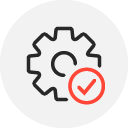
LMS Integrations
It’s rare that large organisations will want a learning platform that operates in isolation these days. LMS integrations with existing HR software such as Workday or SAP, a CRM like Salesforce, and other tools managing employee data can save a great deal of time spent on learner admin.
It can also improve overall business performance by increasing knowledge sharing across your organisation. Define your existing people software where integration could make life easier.
Vendor expectations
Define what you would like to receive back from the vendor. Any experienced LMS provider will have existing templates that they work with and which are often pre-populated to an extent, but you can still request information in a format that suits you.
You may want to request an initial one-page summary of their solution that encapsulates what they can deliver and when, and to what budget. This will make it easier to discuss proposals with your peers and other stakeholders without having to go into the fine detail.
As an LMS buyer, very important information to receive from the vendor includes:
Their company and background
- How long have they been in business? You don’t want to be a guinea pig or deal with an inexperienced team
- How large is their team of LMS developers? While you don’t necessarily need to work with the largest companies and all the overhead costs that come with that, you don’t want the risk of single points of failure that come with working with a small business
- Who are their customers? Do they have experience in your sector and with your company size? If so, this will fast forward their understanding of your needs.
The platform
- Have they ticked all the essential requirements? Don’t let ticking lots of boxes across the must-haves and nice-to-haves cloud your judgement here. A high overall ‘score’ is meaningless if one or to absolute musts are not met - this system just won’t work for you.
- What is the position on data security? Does it meet any specific needs for your industry?
- Technical environment - can it work with your IT set-up?
Budget
- Is the system scalable without additional costs per learner or is it priced per learner? The latter benefits smaller organisations but can become painful for larger ones…
- Is there a separate implementation cost?
- How does ongoing support work and how is it priced?
- Are there update / renewal fees and when are they payable?
- Is user training included or charged separately?
Implementation plan
- Do you start with a limited cohort of learners for user testing?
- What are the various implementation stages and timescales for each?
- What involvement is required from the LMS buyer and at what stages?
Summary
Buying an LMS can be a complicated process - especially when you need to factor in your possible future training needs in addition to your immediate requirements.
By putting together a detailed LMS RfP, you can help to ensure that your procurement will be objective and evidence-based, helping you to avoid costly mistakes and disappointment.
Separate genuine must-haves from nice-to-have features, and you can ensure you meet the needs of all your stakeholders, and that any additional features simply make the new platform more enjoyable and more useful for your business as a whole.
As imc Learning has decades of experience delivering on the training needs of some of the world’s best-known brands, if you’d like to have a conversation about your own elearning project, feel free to contact us for an informal chat.

How much does an LMS cost?
How much does a Learning Management System cost? And which will appear after the implementation? We share some insights and explain, what these questions have in common with buying a house.

Headless LMS – definitely not brainless
In this FAQ we explain the purpose and benefits of a headless Learning Management System. Learn more about headless LMS...
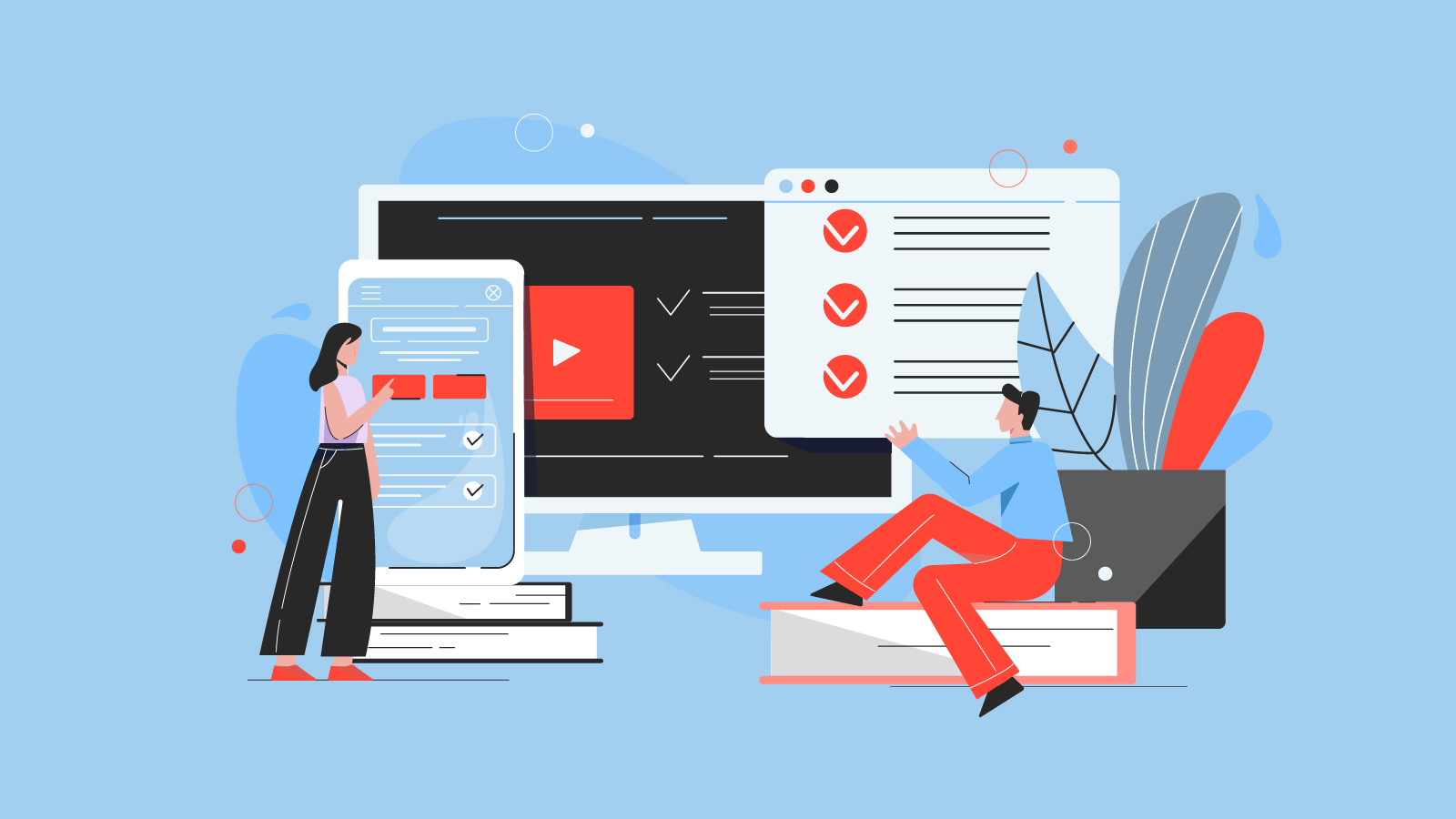
Creating the Perfect Learning Experience for a Remote or Hybrid Workforce
Times have changed for L&D - while many large organisations were already putting resources into digital transformation, our workforce is now more dispersed, with hybrid and remote working looking like it’s here to stay even post-Covid.
Alongside these trends, we have ubiquitous access to more information through ever-faster Internet and mobile devices, while top talent expect to be supported in their professional development - otherwise, they will move on.
What remains the same are people and their motivations. People are fundamental to any company, and what drives a company forward and helps it to stay afloat in a competitive market is an engaged, well-informed and adaptable workforce.
Here we look at how to facilitate the personal and professional development of top talent by creating the perfect learning experience for a remote or hybrid workforce, so that training can become a key competitive advantage.

Technology and a Learning Ecosystem
Keeping your workforce at the forefront of your industry requires regular formal training, but also informal and rapid knowledge sharing between employees and departments.
The ability to respond quickly to new products, services, industry guidance and competitive environments through learning will give any company a competitive edge, but this can be diminished when working remotely.
Whether we’re training face-to-face, digitally or virtually, the fundamentals have remained the same for a very long time; we’re socially motivated learners who need context, reinforcement and practice to acquire new skills. We don’t respond well to formless, monotone, poorly presented content, and we don’t retain information as effectively when we’re not engaged. Making your learning journey engaging, enticing and efficient is where technology can come in.
Technology has revolutionised how we design and deliver learning experiences. Today, learners expect a digital training experience that’s accessible, flexible and engaging.
They’re used to platforms such as Netflix that neatly package and categorise content for them, and offer a library and playlists with a user-friendly interface.
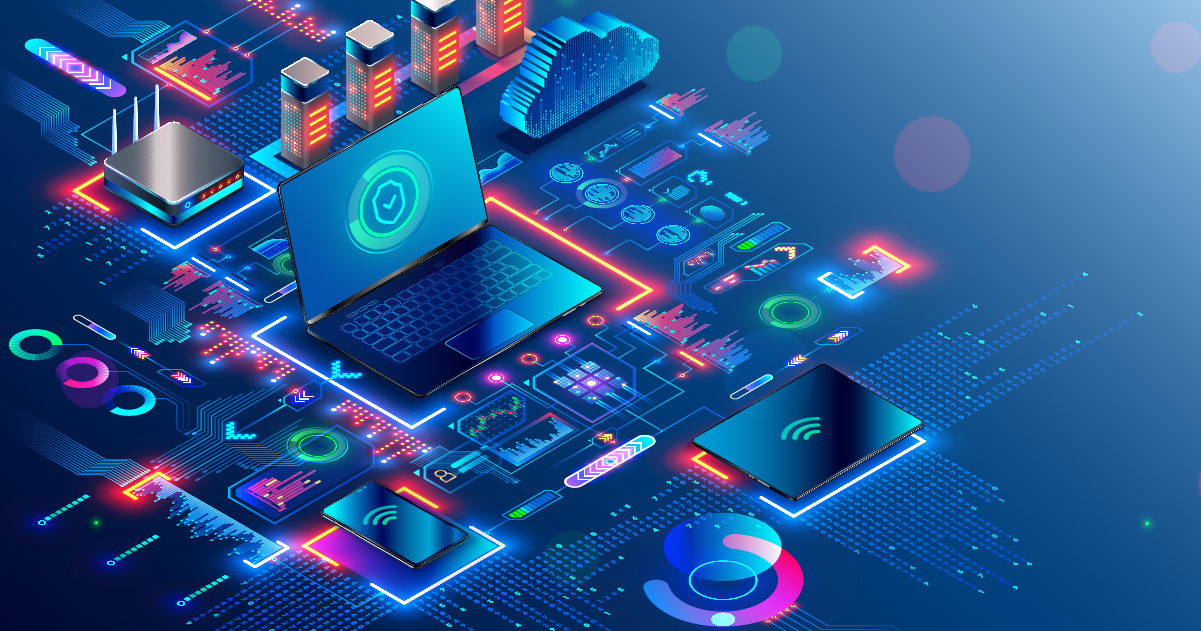
There are a wide variety of digital and online tools that can help learners have a positive learning experience. These are especially useful when it comes to mandatory training, such as for legal or industry compliance, which employees know they need to undertake but may not necessarily be enthusiastic about.
It doesn’t matter how engaging and talented your experts may be, if the platforms and tools you’re using to host a learning journey aren’t up to scratch then your learner will find it difficult to focus.
When seamlessly integrated, there are 3 key L&D tools that can help you create the perfect learning experience even when your teams are disparate. These are the LMS, LXP, and rapid content authoring tools - let’s examine each in turn.
What is a Learning Management System?
A Learning Management System (LMS) maintains, tracks and records a learner's journey, including analysing their comprehension of subject matter and completion of learning events. An LMS will help L&D managers track an individual's or a group’s progress through training by serving as a system of record and audit, and pinpointing where they may need additional help or support.
There are several types of Learning Management System which meet various needs and budgets, including open source software, deployed or Software as a Service (SaaS) solutions. An open source solution is free at the point of access and has a committed online community that will update it regularly, rolling out improvements and add-ons for all to use. It can be a good option for companies with tight budgets who desire something to enhance their learning experience without breaking the bank. However, it can be a security risk without expert set-up and support, and can often be plain and uninspiring out of the box, requiring a great deal of design and customisation - all of which comes at a cost of course.
A hosted or Software as a Service (SaaS) system runs on someone else's server, is set up by a provider and may offer a more customised solution compared to open source software. These systems are usually quite ready to use out of the box.
A deployed LMS solution is set up on computers within your premises, which has its pros and cons. There are greater up-front costs to install the LMS software on-site, but it may save you more money in the long run. This might be a good choice in highly regulated industries and when you have the in-house technical expertise to maintain it.
Historically, the LMS can be unintuitive, unattractive and complex for the user, making it difficult to navigate and read or watch the learning content. In some cases, a badly designed LMS can create more of a hurdle to learning than the content itself.
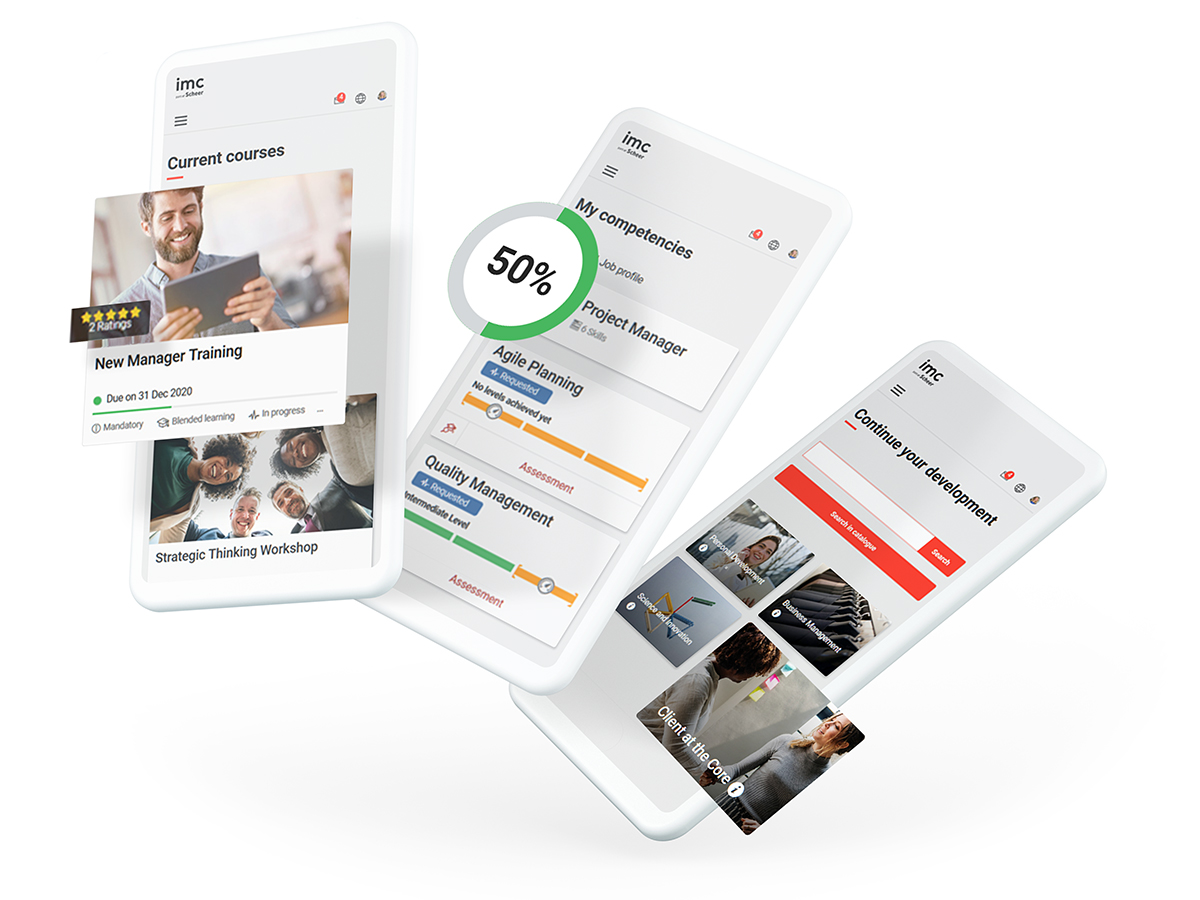
The best LMS, such as what can be found within imc’s Learning Suite, create an easy to use learning journey though, so that learning can be an engaging activity rather than a chore.
An LMS is often seen as a solution for top-down training mandated (or at least encouraged by) the employer. It’s not really designed for self-motivated learners to explore new learning opportunities. This is where a Learning Experience Platform can come in…
What is a Learning Experience Platform?
A Learning Experience Platform (LXP) is the Netflix of the learning technology world. A quality learning experience is designed to entice, encourage and excite learners to consume the content. It’s for self-motivated learning to develop their personal and professional knowledge and skills, which in turn will usually bear fruit for the employer too.
The LXP is designed to be more intuitive to use than the LMS, and utilised effectively, it should provide contextualised, relevant and custom content from multiple sources in order to cater for different learning styles and preferences.
It’s a diverse learning ecosystem of multimedia content exploration.
LXPs enable you to create a personalised experience that can curate and recommend the best content for each person.
We were talking earlier about how hard it can be to motivate people to undertake essential, mandatory training, such as compliance. Well, an expertly executed LXP should make learning feel fun and easy for your learner, yes really - fun, and in turn, hopefully, it will help employees to feel supported and valued, and help to create a culture of learning within an organisation.
Think of the difference between using Netflix or scrolling a government site, what one would you prefer to use? The more at ease and enthused your learners feel in their learning environment the better their journey will be.
The imc Learning Suite combines the best of both an LMS and LXP - giving L&D teams what they need to deliver and track training, and giving employees a place to explore learning opportunities for personal and professional development.
What are rapid content authoring tools and how can they help me create quality training content?
Rapid content authoring tools are a form of software that enables experts to create and package learning content using various forms of media. It means your experts or training managers can create new content, make changes and send updates to learners quickly and easily. The working landscape is ever evolving, especially in post-covid times with hybrid working becoming the norm, and tools such as rapid content authoring empower companies to respond swiftly to changes and stay relevant.
Adopting content authoring tools can enhance your digital transformation journey as a company, empowering experts and learning and development professionals to create adaptive engaging content promptly.
Rapid content authoring tools can help you:
- Repurpose existing content quickly
- Keep development costs low
- Respond swiftly to new products, services, market or environmental changes
- Update and upscale content quickly
- Deliver knowledge in easy-to-digest chunks
- Share content with learners on any device
Content-authoring tools include software Articulate Storyline, Adobe Captivate, Lectora and Camtasia. However, you might have in-house subject matter experts willing and ready to create and share their experience and expertise if they can avoid the learning curve of software used by professional instructional designers.
imc Express enables the quick creation of elearning materials that are rich, engaging and multimedia, but without that learning curve.

What is a healthy learning ecosystem?
A learning ecosystem comprises the elements that make up your user's learning journey and environment including the tools, platforms and technologies. Just like the natural ecosystem, the more diverse the learning environment, the more effective the learning will be.
A complete, well-integrated Learning Suite can enhance not only your learners' experience but your subject matter experts' effectiveness too, enabling them to build engaging content and communicate quickly and efficiently to drive knowledge sharing.

A complete learning experience
Technology helps learners have a positive learning experience, especially when it comes to compulsory training where they may lack the motivation to complete.
Learners today expect training to be engaging, entertaining and diverse in format. This is especially true as remote and hybrid working is on the rise and our workforce becomes more distributed.
People are looking for social connection, a platform that is instinctive to use and easy to digest content that they can absorb and experience digitally or virtually. The latest and best in learning technology can help us achieve all of this.
Want to learn more about leveraging the latest technology to create the perfect learning experience for a remote or hybrid workforce? Contact us here at imc Learning.

Turning a learning curve into an earning curve
Set online training up for success in such an extended enterprise learning scenario, and how to turn a learning curve into an earning curve.

Learning Management System for Membership Organisations
Make your platform effective for current and future training needs for your membership organisation.

Examples of a Good Learning Experience
Here we offer examples of a good learning experience from a handful of our projects.
It’s always a shame when training is rolled out without due consideration for learner engagement. This is one of the reasons that e-learning has a bad reputation - it’s too often seen as a ‘Click next’, box-ticking exercise that employees want to get through ASAP then get on with their day.
High quality, engaging e-learning helps to ensure that learners absorb, retain and implement new knowledge and skills, bringing about long-term behaviour change and improved performance.
Delivering a good learning experience can also help to create a culture of learning where employees then go seeking out personal and professional development opportunities that will benefit the whole organisation.
So on to some examples of where our e-learning solutions, including custom content and learning management systems (LMS), have enabled training to deliver real impact…

Not just good – a Meisterpiece: LMS and blended learning for Jägermeister
Jägermeister has around 1000 direct employees, plus a large network of resellers and external distribution partners around the world, making a large number of people requiring training.
At the same time, a coherent and strong brand image that all employees identify with is a top priority for Jägermeister, so the learner experience was considered crucial.
They decided to use the imc Learning Suite for their training platform because the well thought out extended enterprise scenario, in combination with the clear module structure, convinced them that we were a good fit for their needs.

Following testing and roll-out, users were especially taken with how the e-learning content triggered an emotional response. The consensus among the employees: Once you log in to Meister Academy, the training courses don’t feel like learning.
The direct integration of LinkedIn Learning courses was also received very favourably, as it gives employees an even greater choice of courses.
Philipp Terstesse, Manager Global Trade Marketing at Jägermeister, gave the following summary:
“Our goal was to create a learning experience that takes a new approach and motivates learners. The learner and employee experience were extremely important to us.
We firmly believe that our digital ambitions go a long way towards shaping the future of our brand. We are thrilled to have a strong partner in imc who will stay by our side as we embark on this journey into the future together.”
Read more about our work creating an LMS and blended learning for Jägermeister.
Comprehensive onboarding and learning experience for The Green Climate Fund
Established within the framework of the United Nations Framework Convention on Climate Change (UNFCCC), this organisation based in South Korea was set up to assist developing countries in adaptation and mitigation practices to counter climate change.
At the time of writing, The Green Climate Fund (GSF) had raised $10.8B USD to support 200 projects and avoid 2.1B tonnes of CO2 pollution.
The fund wanted a comprehensive onboarding and training solution providing an understanding of GCF's climate focus, shared values, governance, policies and practices, all underpinned by a learning experience framework and strategy.
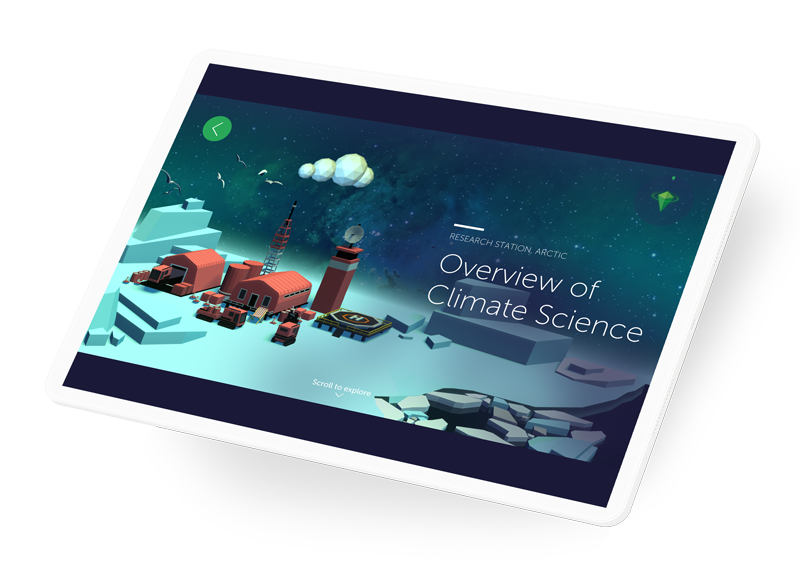
We worked closely with GSF to create their Learning Experience Framework - a continuous model of learning and development that embeds opportunities of meaningful experience, exposure and education.
This was followed by 20 hours of Digital Orientation Modules, focusing on four core types of digital learning approaches to meet the diversity of needs we discovered throughout our research:
- Scenario-based training
- Storytelling
- Problem-based learning
- FAQs and resources
As a result of this e-learning, we were able to measure a reduction in human operational and procedural error, while embedding confidence and competence among new employees.
imc and the Green Climate Fund were recognised as Platinum winners in the 2021 LearnX awards. Client feedback was also extremely positive - George Zedginidze, Head of Knowledge and Change Management at the Green Climate Fund said:
“We at the GCF are elated to be partnered with imc! Their professionalism and flexibility has made this project what it is today. We are especially thrilled with the imc team, whose time, effort, and abilities have made this partnership a success.”
Read more about this onboarding and learning experience project for GCF.
Motivation for an unloved topic: compliance training for Audi
Trainees are usually unenthusiastic about the idea of compliance training even before it begins - to say the least. So Audi wanted to create unusual compliance training, delivered in a way where the necessary knowledge is clearly conveyed to them and they have fun along the way.
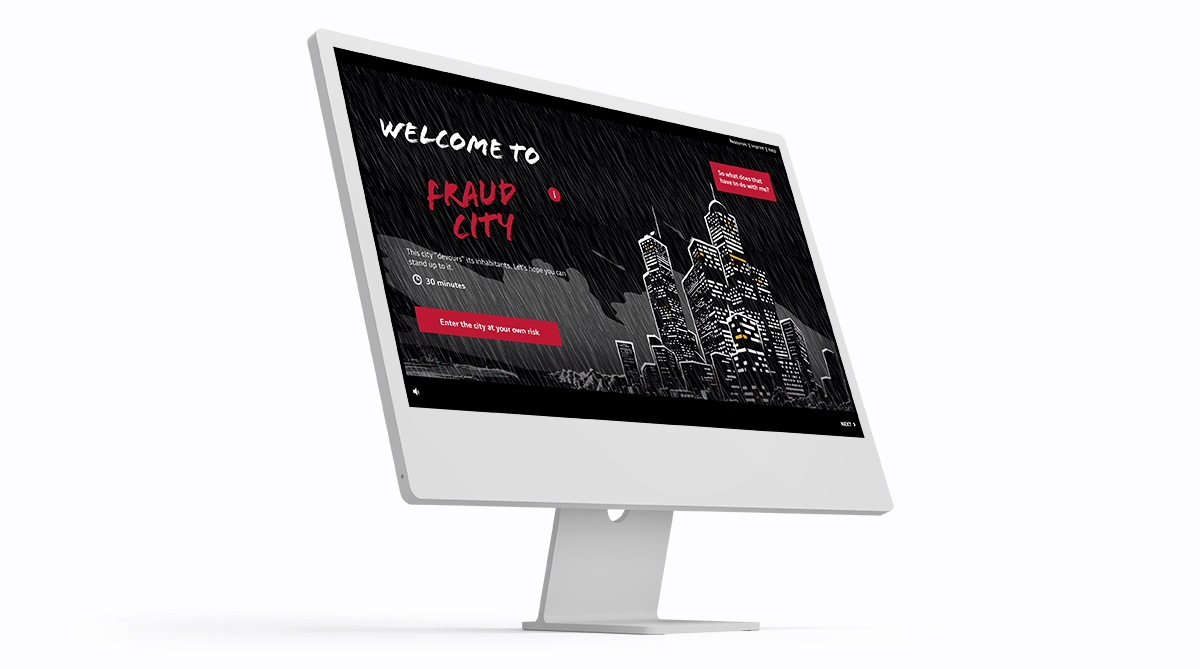
“Welcome to Fraud City. The city “eats” its residents – skin, hair and all. We hope you’re up to it. Enter at your own risk.”
Not your usual intro to compliance training! This entire web-based training (WBT) course involved motion design and adopted the style of “Sin City”. It takes the brave participant to a corrupt city full of dangers and suspect colleagues – accompanied by Detective Fraudless.
The employee navigates through the training course with the criteria for identifying cases of fraud being revealed along the way. So are behavioural patterns that call for special attention.
Audi demonstrated great courage with this unconventional concept – and reaped the rewards: The elaborate and polarising concept leaves a lasting impression, creating a buzz among almost all employees.
Laura Schumacher of the Audi Compliance Department told us:
“Compliance training is always a tricky subject. For this WBT though, we received very favourable feedback from our employees!”
Read more about this fun and engaging compliance training for Audi.
Want to learn more?
You can see more examples of a good learning experience within the case study section of our website. Can we help you to transform training within your organisation by creating an engaging learner experience?
Contact us here at imc.
![[E-Learning Punk] Exploratory 3D Learning](https://images.im-c.com/wp-content/uploads/2021/02/imc_image_elearningpunk_3Dlearning_hero.jpg)
Exploratory 3D Learning
Not only movies like “Avatar”, but also learning content can benefit from spatially compelling images. We explain the advantages of this professional development trend and present you application scenarios for 3D learning.

Immersive Learning during the Crisis
Immersion is one of the most successful learning methods. Jennifer Fritz, VR expert, points out the potential benefits of using Virtual Reality especially during this unprecedented times.

Training Digitisation – Leverage knowledge sharing among your people
Here we look at the important topics of knowledge sharing and training digitisation, with tips on how to leverage the experience of your employees to improve performance and future-proof your business.
For many businesses, especially those within the knowledge-based economy, existing employees are their greatest asset. Staff turnover is expensive for any business. Studies show that the direct cost of replacement is over £30,000 on average to replace an employee earning over £25,000 per annum. However, more detrimental is often the indirect cost that comes with losing valuable knowledge and experience - something that is far harder to measure.
Facilitating and encouraging knowledge sharing across your organisation can be an extremely effective way to both enhance productivity within your existing teams and mitigate the brain drain that comes with staff turnover.
While your L&D department can roll out training programmes in a planned and centralised manner, a culture of knowledge sharing and a toolkit that makes it easy means that information can be shared at the speed of need (‘Just in Time Learning’) and when it’s convenient for subject matter experts to do so.

Knowledge Sharing Definition
Knowledge sharing is the exchange of information, skills and experience between individuals or across groups. When expertise is shared by an experienced person, it allows further people to benefit from that experience in order to boost their own performance and that of their peers, potentially strengthening an entire organisation.
Much knowledge sharing occurs naturally and accidentally through day to day interactions and conversations - those ‘water-cooler’ moments that characterise informal learning or tacit knowledge. Of course, the Covid-19 pandemic has caused (or at least accelerated) the transition to a hybrid or fully-remote work environment, making the accidental water-cooler conversation much less likely for many.
That informal kind of knowledge transfer is a social activity that is often hard to describe and organise - it comes with nuance, intuition and the free-flow of ideas.
However, explicit knowledge is something that can be more planned for and organised, so that specific information can be codified and made available to others.
The main attributes of explicit knowledge sharing are:
- Describable - the subject matter expert must be able to clearly articulate the information and experience they want to share
- Visible - the recipient must be made aware that the learning materials exist
- Accessible - the recipient must be able to open and consume the content where and when they need it
- Organised - the recipient must be able to navigate learning materials so that they can be consumed in a structured manner without confusion or information overload
- Complete - the education or training content should fit into a wider organisational context, signpost further related information where needed, and clarify any distinction between self-published, employee-generated content and the more top-down learning materials created by an L&D team.
Knowledge Sharing Benefits
When you have in-house expertise, you’ll want existing and future employees to be able to access it and enhance their own performance as a result. Knowledge sharing benefits can grow exponentially across a large organisation, spawning new ideas and strengthening the collective brain.
With a culture of knowledge sharing and providing the tools for digitising content, along with the structures to support it, a company can gain a great deal of competitive advantage. Some of the many benefits of knowledge sharing include:

If important knowledge is shared frequently and in a well-organised manner, the loss and disruption caused by a key employee leaving is greatly reduced.
Information shared by the leaver can be made available to their peers and / or successor, in addition to the general onboarding and training materials.
While guarding against brain drain is about making the organisation resilient to employee departures by being agile in a reactive situation, succession planning is about looking ahead to (perhaps even scheduling) departures and promotions. This includes the process of knowledge transfer that will need to take place during that transition.
Starting in Spring 2021 during the Covid-19 pandemic, employees voluntarily leaving their jobs en-masse in many countries - most notably the US - was a trend dubbed ‘The Great Resignation’ by organisational psychologist Dr Anthony Klotz.
The pandemic caused employees in many countries to rethink their work-life balance and many countries, including the likes of the UK, Australia and Canada as well as the US, saw resignations increase, in addition to the millions of forced redundancies.
Regardless of Covid-19, millions of ‘baby boomers’ - those born between 1946 and 1964 - are now hitting retirement age. This large cohort of the population holds vast amounts of information and experience to share with their Generation X, Millennial and Gen Z successors.
Two of the great frustrations among business leaders are duplication of effort across teams that wastes resources and a lack of communication that prevents learning from previous mistakes.
With greater insight into what other groups are doing or have done in the past - good and bad, knowledge sharing helps time and resources to be used more effectively.
When individuals hoard information (albeit unintentionally most of the time), trust among peers is diminished.
Providing employees with knowledge building tools, such as the ability to quickly and easily create and share digital training materials, more employees will feel supported by each other and that they are working collaboratively as part of a genuine team.

Employees often feel that they are not being listened to, which can lead to discontent and potentially resignations as a result. Rather than only experience top-down training that can feel disconnected from their real-like working environment, knowledge sharing tools and processes can help employees at every level to create learning materials that help to provide management support and information gathering.
This can then influence subsequent onboarding and training materials created by management and L&D teams, making them more contextually relevant.
The 70:20:10 learning methodology proposes that, on average, 70% of workplace learning is done ‘on the job’, while 20% is done through the sharing of knowledge between peers and only 10% is through formal, top-down onboarding and training.
That 20% part in the middle goes both ways - not only does the recipient benefit from information shared by the expert (making the 70% on the job part feel better supported) but the action of sharing knowledge can actually strengthen even the expert’s understanding of a subject.
Studies such as this one detailed in the Applied Cognitive Psychology journal show that learning by teaching others is extremely effective because it enhances the pathways of knowledge retrieval.

Training Digitisation & Knowledge Sharing Tools
Digitising training makes it possible to store and share information with an unlimited number of employees, even across territories, virtually instantly. A good, modern elearning content authoring tool makes it easy for any of your employees - regardless of their technical skills - to share knowledge digitally.
Such an authoring tool, like imc Express, can immediately benefit colleagues in any location via the cloud, while this form of training digitisation makes more knowledge available for future recruits too.
This is about employee-generated training content, and each person will have their own preferences around the style and media they feel most comfortable using for knowledge sharing.
Therefore, you’ll want to make sure your authoring tool enables content creation and sharing though any combination of:
- Text
- Audio
- Video (including subtitling)
- Images
- Interactive elements
There should be little to no learning curve when it comes to an elearning authoring tool for employee-generated training software. It should be easy to access on any device, easy to use, and make the sharing of materials a fast and simple process.
It should also provide visual elements out of the box to make that training eye-catching and engaging by default so that your people can be proud of the materials they create - without needing to work at it.
For over 20 years, we’ve worked with some of the world’s leading brands, such as Audi, BASF, Sky, Deloitte and Vodafone, supporting their training needs with elearning solutions.
This experience has enabled us to create an elearning toolkit that makes it easy for them to digitise training content and make it accessible across multiple locations, countries and even languages.
If you’d like to learn more about how our solutions could enhance training digitisation and knowledge sharing within your organisation, feel free to contact us for an informal chat about your needs and goals.

Courage to the LMS - also as SME!
Not only big companies should have the courage to go for a Learning Management System (LMS). In our interview Christian Mai from S&G Mercedes Benz, tells about his experiences with rolling out an LMS in a Small and Medium Enterprise (SME).
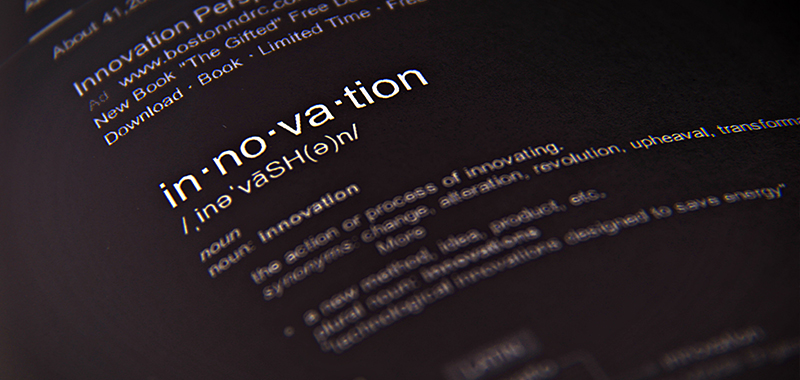
The big e-learning glossary
WBT, SCORM, Predictive Analytics, Blended Learning - uh, what? The first two articles in this series are a glossary for those who have felt lost in the e-learning jungle of abbreviations and technical terms.

Panel Talk: Fosway Group, Learning Light and imc
As businesses emerged from lockdown and social distancing measures in many parts of the world, elearning experts from imc, Fosway and Learning Light got together remotely to discuss the post-pandemic future of learning platforms in 2022 and beyond.
Key topics discussed include:
- LMS, LXP, NGDLE, Suites…?
- Headless LMS
- Concrete Advice for the Learning Platform Buyer
- Learning Designer to Performance Consultant
Hosted by Alison West, Pre-Sales Consultant of imc Learning in London, the panel of experts discussing these topics consisted of:

Fiona Leteney
Senior Analyst at Fosway Group, who has worked in the learning technology market for over two decades, and brings a wealth of insights from customers, vendors and the market.

David Patterson
Lead eLearning Consultant at Learning Light, who has been influential in the world of elearning and learning technologies for over a decade.

Sven Becker
Executive Board Member at imc, with over a decade’s experience from the vendor’s perspective.

LMS, LXP, NGDLE, Suites…?
Alison kicked off the discussion commenting that there is a large and growing list of terminology describing the learning platforms used for education and training today, so asked David to, for those uninitiated in some of these terms, to describe the differences between them.
David
The learning management system (LMS) has been around as a term for many many years, probably dating back to the late 1990s.
Recently we’ve seen the evolution of the term learning experience platform (LXP), which is interesting as people are trying to present a new take on digital learning. Part of the motivation is that a new such platform is not an LMS, which is more process-focused, whereas the LXP is more content-orientated.
However, in David’s view, we are now seeing these two types of platform on the market fuse together, with many LMS providers adding LXP functionality and vice-versa.
Does this matter? Well yes - I buyer of these learning technologies will want to have a clear understanding of what these terms mean. So it’s important, and a goal of this discussion, to explain and simplify some of the terms being used today.
Alison commented to Fiona that at Fosway, they seem to be moving away from terms such as LMS and LXP and using words such as Suites, asking why that is.
Fiona
Building on what David said, Fosway have also been seeing a merging of the ideas of LMS and LXP. In fact, before the concept of Suites, Fosway had been using the term Next Gen Learning Environment as a term, because they never really saw LXP as a valid term to describe what a system does.
In Fosway’s view, LXP is a marketing term, which was launched into the market and everyone latched onto it. This was because buyers wanted to be buying into the latest technology as opposed to a ‘legacy LMS’. At the same time, vendors didn’t want to be seen as a legacy LMS so adopted the term as well.
In reality, when talking to a corporate learning platform, when Fosway ask what they mean when they say they are looking for an LXP, the answer is always very different. So, it was a couple of years ago that Fosway started moving away from using the words LMS and LXP and started talking about Suites and ‘Specialists’.
For example, if you’re a smaller organisation and you only have budget for one system - that’s when you need a Suite, because that’s going to give you the broader range of functionality that you’re going to need. If you then have the opportunity to dig deeper into a particular area, you then might look at one of the Specialists.
Perhaps you’d look at a specialist tool for content curation, or one that focuses on Instructor-Led Training (ILT). Perhaps you’d add these in, and some vendors facilitate this, whitelisted, to add depth of specialism.
That’s why Fosway use the term Suite for not only learning systems, but across HR technology as well.
So, Suites for broad capability, with Specialists usually focusing on just one area.
Alison then put the same question to Sven to gain the platform provider’s perspective.
Sven
This difference these days is that there is no longer a clear orientation driven by the customer. imc traditionally built systems that were relatively process-driven as David had mentioned.
The idea of ‘Learning Experience’ was seen as a commodity - normal for imc’s solutions. Learning Experience is a concept, not a system, so to create a good learning experience, you need to look at the concepts from the learner’s perspective.
An important shift is to look ahead, years into the future, when creating an LMS, NGLP (Next Generation Learning Platform) or whatever you want to call it. It isn’t just about post-covid planning - that’s an obvious example, but it should have been part of the thinking long before that and must look beyond the immediacy of pandemic and post-pandemic requirements.
What is the user’s working environment? For many, it revolves around a mobile world and great systems are considering the needs of users who need a mobile-first learning system.
It’s not just about “does this look good on both a desktop and a mobile” - what is the environment of both types of user? Does the mobile user have different sound restrictions because they might be learning on a busy train for example?
To broaden the conceptual thinking even further on the part of the vendor, we need to think about the complete Employee Experience and how does learning dovetail with that. After all, learning experience is just part of the employee experience.
So, for those feeling overwhelmed by all the terminology still around and the level of choice and complexity involved in the buying process, how should the buyer deal with that overwhelm?
David
“Listen to someone like Fiona or myself!” People at the likes of Fosway and Learning Light spend their time listening to the business needs of organisations and developing an understanding of their learning requirements.
From that, a consultant can uncover the types of learning technology that the buyer will need. Sven made a good point that learning experience is really a concept, rather than a system, and that’s an important takeaway. There will, though, always be technology that facilitates that - and some doing it better than others.
Learning Suite is a useful term as well - and the best suites are getting bigger and more capable than ever before. Therefore, it’s important as the client to establish in advance what your learning outcomes are, what the learner journeys are, and what the data is that you’re going to need to understand to underpin your learning and bring back to the wider organisation.

Headless LMS
So, what is the headless LMS and how is it different from integration of deep content?
David
The concept of the headless LMS has emerged based on the world of content marketing. It springs from the idea of the headless CMS (content management system).
What those systems do is push content out across every channel. The ‘head’ used to be the website, but that has been kind of cut off. The CMS now is presenting content through social media channels, productivity suites, websites and even VR.
Several learning platform vendors have looked at this trend and said “Yes - this is a valid concept for learning as well”.
This is an evolution, not a revolution, as some companies such as imc have been pushing out highly evolved APIs and deep links into learning platforms and integrated content. The headless LMS is simply the next step on this journey, putting the player into the system.
So, the player will start to appear within Microsoft Teams, Slack, your CRM or your CMS, and the learning will then be instantly available to your learners at the very moment they need it. Incredibly rich data will then come back into the core learning platform / suite and really enhance your overall business analytics as well.
Fiona
There are two requirements that tend to focus corporate engagement with Fosway. Often, large organisations are managing multiple learning platforms and are looking for a single point of access to avoid or eliminate confusion.
On the other hand, some companies want to facilitate access to learning wherever the learners happen to be at any point in time, and to then feed back into the learning system.
This highlights the need for integration. Back at the start of the pandemic, 84% of business leaders were saying “Now more than ever, we need to integrate the learning systems with our business applications, such as MS Teams or Slack”.
Fosway brought together a dozen corporate leaders for a roundtable discussion of this issue, and found among them a lot of frustration with the complexity involved in making integration happen. Yes, APIs exist, but it’s rarely as simple an exercise as they were sold on.
Like David said, the headless LMS is an important concept that is starting to improve this, and learning systems like imc are helping in ensuring that data is flowing through the whole tech ecosystem. This includes the learning ecosystem of course, but also the HR systems and the wider business ecosystems out there.
The more we can get that data flowing through the whole ecosystem, the better our business decision making can be, and it’s that need for integration that’s coming through loud and clear from corporates.
Sven
It’s important to note that headless LMS is not just the next marketing term - headless is a complex monster!
Sometimes vendors say “it’s OK, we have open APIs, everything is easy” but then the customer finds that this isn’t true. API management is one of the most complex areas of IT. This is why we have to talk about things like RPA - Robotic Process Automation - to help with API management.
Again, headless is a concept, not a technology, and it’s about how we structure our learning ecosystem. The learning ecosystem is a culture thing, not a technology thing.
This is all about the flow of work - “how can we bring content to our people more easily?”.
For example, way back in 2009, Deloitte published a study where they had looked at the modern learner. They found that even then, on average people were looking at their smartphone 9 times per hour to check if there was a new message.
So we are driven by the ‘pull’ of information. The current standard learning management system is not ready for this - you have to log in, go to your course, open the right bit of learning etc - but that’s just not how we interact with information today.
If we know that people are checking their phones anyway, why don’t we push information in that direction, such as a reminder about key points from last week’s instructor-led training for example - when and where it might be helpful and appropriate.
Where this will become more important over the next 5 years is in the greater adoption of IoT - the Internet of Things.
We already have Internet enabled fridges. A fridge is able to ‘buy’ milk. In the same way, if we can see that a member of the team is on the train on their way to see a client, why not send them a push notification with three key points to remember about that client for example?
This is learning in the flow of work - it’s context-based and it’s what we mean by headless. If we think purely in ‘portal’ terms, whether it’s LMS, LXP or whatever, where you have to go and log in, we’re creating a specific access point for learning and that just won’t be the future.
Learning should be ubiquitous, around us all the time, and the culture should be driven by the learners themselves and how they work.
Sometimes, customers come to imc and say “give us all the APIs and let’s integrate everything” but we try to say “wait, let’s look at what we need, let’s look at the culture you are trying to create”.

Concrete Advice for the Learning Platform Buyer
So, for those looking to ensure their elearning system is future-ready and future-proof, what concrete advice can you give to a learning platform buyer in the post-covid world?
David
It really is about starting at and thinking through at the conceptual level. My own work is a lot about building conceptual models and looking at the information flows around that.
Worry first about how you want to structure your learning and keep the needs of your learners front of mind at all times. The choice of technology can then come after that and be based on how you want to deliver on those learner needs.
Fiona
Of course, Covid has meant that we’ve needed to move more of our training online. We’ve been talking a lot about bite size learning and microlearning for sometime, but the highest value training - onboarding and leadership - has traditionally been classroom-based.
That kind of training has very quickly been moved online - which was necessary and it’s great that it happened, but we now need to look very carefully from the corporate, vendor and learner perspectives at what that should really look like.
20 years ago, we went from classroom-based training to elearning for all the compliance stuff. This took the engagement piece out of the mix along with the trainer, and people started to hate the ‘click Next’ style elearning - rightly so.
The risk now is that learners could start to hate more areas of training now that more has been moved online if we don’t get it right. We need to create a safe place of learning where people can join their cohort to collaborate, do joint assignments etc.
We need to look carefully at how learning technology can best facilitate this and must not now sit back on our laurels and say - “we got all our training online so all is fine”.
Learning Designer to Performance Consultant
Sven built on the buyer tips from Fiona and David, offering advice on how L&D approaches elearning…
Sven
We might want to look at how learning is structured within the organisation and perhaps move some L&D roles away from just learning design and into being more of a ‘Performance Consultant’.
A learning designer always asks “what is the learning outcome of this programme?”. We need to ask ourselves ”What is the business outcome?”.
This is often the failure of learning design - we identify a learning outcome but it doesn’t feed into any business outcome.
When you move the Learning Designer to become more of a Performance Consultant, you start to create the best of both worlds - learning outcomes that are fully aligned with the business goals.

Fosway Group: "Focus on your learning ecosystem"
Terms such as LMS, NGLE and LXP are confusing for corporate buyers.
Fosway Group's learning industry analyst Fiona Leteney dives into the matter.

Informal learning: Everyday hero of work
“Formal learning is like riding a bus. Informal learning is more like cycling.” We explain what this means and share some key facts and recomemndations

More about our LMS
If you would like to learn more about imc's Learning Management, check here for more information.

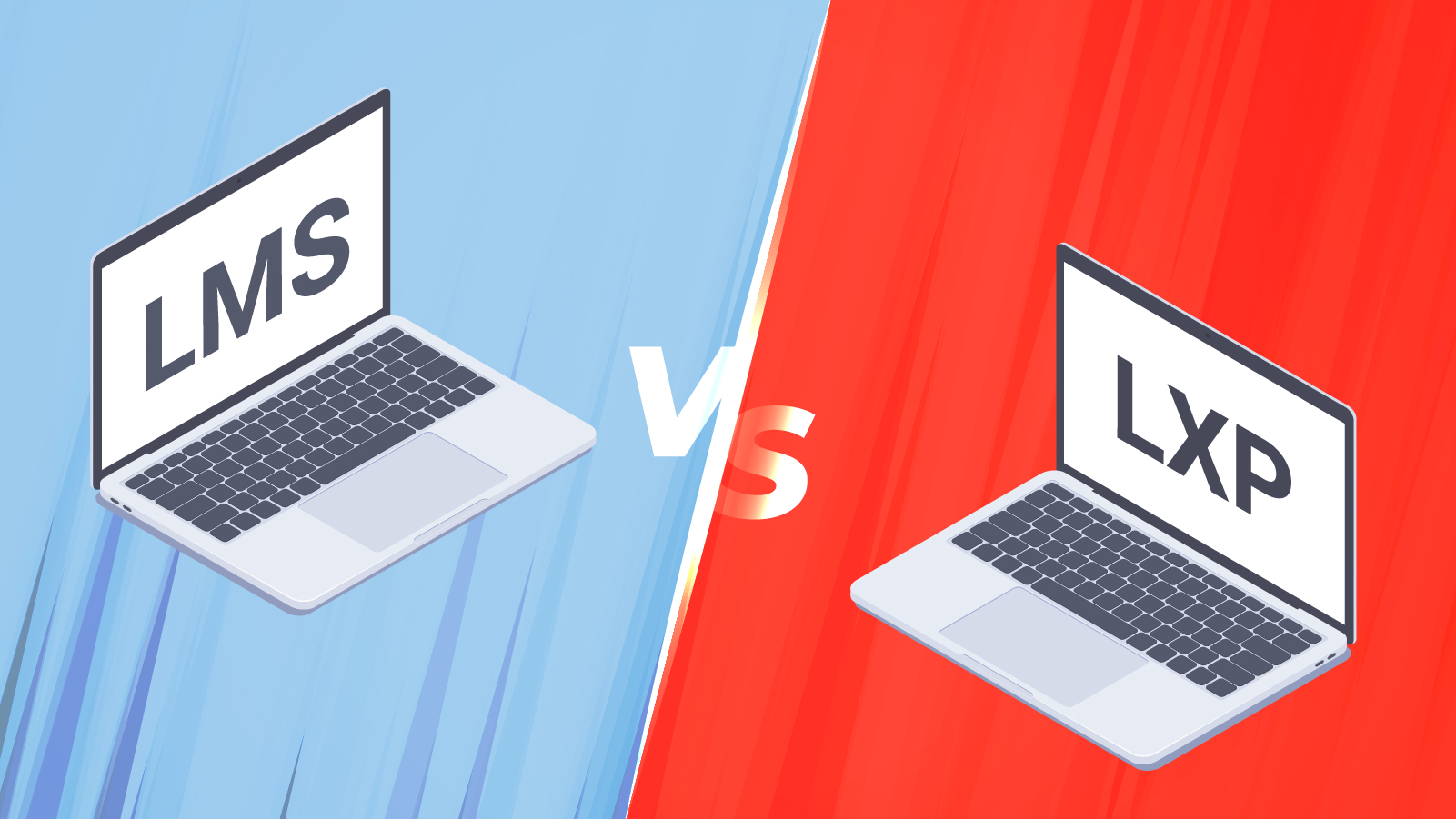
LMS vs LXP - What's the Difference?
If you are weighing up the pros and cons of an LMS vs LXP or even an integrated solution in a Learning Suite, here we offer an introduction to these concepts.
So what’s the difference between a learning management system (LMS) and a Learning Experience Platform (LXP)? It’s all about push vs pull.

What is an LMS?
An LMS is a tool for Learning and Development (L&D) managers, and often HR teams, to roll out training and make it available via desktop or mobile devices. It can enable anytime, anywhere learning if learners can access e-learning content online.
The LMS is most commonly used for employee onboarding and compliance training, getting new hires up to speed with health and safety, company procedures, product knowledge, and ongoing training that will support the organisation towards its goals.
Because this is very much top-down, it’s the Push side of training and is often mandatory as dictated by the company and managers, and perhaps also by law or industry regulators.
The benefits of an LMS include:
- The ability of L&D and HR to roll out training content quickly at scale - even to a global workforce
- A low cost way to update existing training materials when products, services or legislation change
- The ability to demonstrate completion of mandatory training, assisting regulatory compliance
- Learner analytics, which will help to identify individuals or groups need additional support.

What is an LXP?
The LXP is a relatively new concept that puts the focus on the learner and their wants in terms of education and training. It enables the exploration of optional learning content away from anything related to mandatory training.
The LXP takes into account the fact that different people have different personal and professional goals, with some people actively seeking out new learning opportunities beyond those specified as being essential by the employer.
AI and recommendation engines might be used to suggest e-learning content that might be of interest to each individual based on their current role and potential career path and / or their previous learning behaviour. This is similar to how Netflix will suggest TV shows or movies to watch next based on previous viewing behaviours.
Suggested content could be within the LXP itself or hosted externally, such as YouTube videos.
As the employee is in control of the pace and content of their learning, it is bottom-up and is the Pull side of training - suggested and encouraged, but never mandated.
The benefits of an LXP include:
- Making the employee feel valued and supported as an individual, creating a positive learner experience
- Creating a way for highly motivated employees to better their knowledge and skills, which in turn can benefit the company because talent can flourish
- Increased employee retention - the LinkedIn Workforce Learning Report of 2022 showed that with better internal mobility support, companies see an average tenure of 5.4 years - nearly double the 2.9 years found at companies that struggle with it
- Support for the broader digital learning transformation journey - as learner-initiated training will be more enjoyable, it helps the entire organisation become more engaged with e-learning as the primary way of enhancing knowledge and skills. This not only creates a culture of learning, but can add rocket fuel to the long-term digital transformation programme.

LMS, LXP or Learning Suite?
So with so many important attributes within both the LMS and LXP, do you need both? Many organisations do successfully manage two systems with some integration with HR and people management tools, but this can lead to some inefficiency and additional administration time.
The easier and more efficient way to leverage the benefits of an LMS and LXP is to have a single, integrated solution in a Learning Suite.
This modern solution allows L&D and HR teams to collaborate without duplication of effort and administration time, and allows the learner to seamlessly progress from mandatory training to optional learning for personal and professional development.
If you’re looking to create a culture of learning within your organisation to increase employee satisfaction and improve performance, as well as potentially accelerating digital transformation, a Learning Suite is certainly the way to go.
The imc Learning Suite is a modern platform based on decades of experience supporting training at some of the world’s best known brands. It’s highly customisable and brandable, and supports every type of training, from Compliance to AI-supported, Personalised Learning paths.
Because it easily integrates with existing people management and business software, it can slot in with existing technologies - minimising additional admin time to start leveraging its benefits.


The Dawn of Integrated Platforms
Setting up an entire learning ecosystem through the structure, connection via API & Artificial Intelligence are some considerations when integrating an LMS & LXP.

Headless LMS - definitely not brainless
A headless LMS makes data maintenance significantly easier while also facilitating greater flexibility and customisation, especially within a learning ecosystem comprising several systems in communication with each other.

A Digital Transformation Mindset for Your Learning Ecosystem
Here we look at the reality of what a digital transformation mindset is within an organisation and how your learning ecosystem is not just an aspect of it, but how it should be the central hub for change.
First of all, we need to clear up a myth. Digital Transformation is NOT about adding technology. It’s about cultural change across an organisation and a fundamental shift in how business is done.
Much like a hammer does not build a house - it’s simply a tool - technology does not make a digital transformation. If you want to take your organisation through a digital transformation programme, you need to shift how your managers and employees think and talk about work.
A digital-led organisation is one looking to find new levels of efficiency, profitability and future-proofing by being open to and adopting technologies that can make these happen. It’s a programme that is initially top-down but that requires buy-in at all levels and that has the goal of empowering employees and customers, so that the implementation is bottom-up.
Prominent IT industry expert Brian Solis defines digital transformation as:
“The realignment of or investment in new technology, business models, and processes to drive value for customers and employees and more effectively compete in an ever-changing digital economy.”
Because digital transformation is a mindset not confined to tech, it is relevant to any sector - even those seen as traditional and steady, such as Law and Accountancy. In fact, it is those sectors that are traditionally slow-moving and that are seen to play it safe where there is often most to gain. Digital transformation can be a powerful competitive advantage where you can leap ahead.

The components of digital transformation
For a large organisation looking at cultural change, where to start can be an overwhelming prospect. It’s important to achieve consensus among your leadership team. Like most IT projects that fail, the issue is rarely down to the technology but rather the communication and implementation process - the resistance that comes from new systems being forced upon a team that was not fully bought-in.
Back in 2018, Forbes estimated that $1.3 Trillion was spent on digital transformation initiatives, with 70% ($900 Billion) of that budget wasted.
Since then, business leaders have become increasingly aware that not what you implement but how you implement it is key to success.
Global technology giant Hitachi break digital transformation down into 6 key components:
- Innovation
- Collaboration
- Experience
- Infrastructure Modernisation
- Operational Excellence
- Information and Insights
By keeping these 6 areas front of mind, you can help to ensure that your ideas for digital transformation amount to much more than buying the latest hardware and software - they’re about broader business goals.
The successful Olympic British Rowing team of the early 2000’s had the mantra:
“Will it make the boat go faster?”
When looking at digital projects, every stakeholder should be asking similar questions: “Will this improve collaboration?”, “Will this increase operational excellence?” etc. But you should also ask questions at the implementation stage, such as “Are we ensuring collaboration, operational excellence etc” before, during and after the roll out of new digital systems.
The Role of your Learning Ecosystem in Digital Transformation
When you think of Learning within the context of Digital Transformation, you might think put the face to face training online right? Use elearning instead of traditional training…
Well, going from face to face to elearning is part of a digital transformation yes, and many organisations were forced to accelerate this process in the midst of the Covid-19 pandemic during 2020 and 2021 in particular.
However, the most powerful contribution that elearning can make within Digital Transformation is in creating the central hub where every area of an organisation can learn about the programme, how it affects their team and their role, and access the latest information about progress.

What is the Learning Ecosystem?
The word ecosystem comes from biology and refers to a specific geography and the complex interactions of all the living things (from large animals to plants and microscopic organisms) between each other and their environment.
Therefore, a learning ecosystem refers to the components of People, Technology, Tools (including Data), Systems and Culture that affect Learning. Some definitions include Strategy as one of the components. However, if you are going to proactively create a learning ecosystem then the Strategy should sit above it and contain your guiding principles. It should define how you are going to create and shape the learning ecosystem.
A learning ecosystem will involve the L&D team of course, the Learning Suite (an LMS, LXP or even better - an integrated solution), and the way data on elearning is collected, processed and shared. Crucially, a learning ecosystem will every learner (ie every person) across the organisation and the collective attitude towards learning.
A digital learning ecosystem, if created and managed well, can embody the entire digital transformation. It involves using a digital-first approach to every aspect of learning and knowledge sharing.
At the centre of this digital learning ecosystem is the learning platform or ‘learning suite’ - the main L&D toolkit for managing and rolling out learning to every member of the organisation.
A modern, branded, engaging Learning Suite will perform two major functions:
Push training out
Push training out to relevant parties as and when required at the time and speed of need. This is a common learning management system (LMS) functionality. It allows HR, L&D and other business leaders sight of training progress so that they can ensure their teams are up to speed with new systems and organisational processes.

Pull employees in
Pull employees into the digital transformation programme by being home to all the current thinking, planning and progress information. Done well, there will be background documents, company vision videos from leaders, cross-departmental data and more.
By making such information available 24/7, every employee can feel that they are on the digital transformation journey with the company, and that there is greater transparency than being told about a programme by email or a one-off memo.
Benefits of a Digital Learning Ecosystem
A great learning ecosystem will be much more than where you go to complete training when you are told to. It will be where employees and managers can go to learn about what their peers are doing in other departments and share ideas, fostering greater team spirit.
Ideas can be shared and found, leading to experience being harnessed and retained, even when talent inevitably leaves from time to time.
Such knowledge sharing can be a powerful tool in ensuring operational excellence, being a meeting place for collaboration and uncovering useful information and insights.
Rather than digital projects happening in silos, signposting them within your learning ecosystem will provide data and insights that enable other teams to learn about what has worked (or not) within the organisation, where integrations may be possible, and where people can communicate and help each other.
In Summary
Peter Drucker suggested that the greatest contribution of management in the 20th Century was the 50-fold increase in productivity among manual workers through managerial practices.
The term ‘digital transformation’ took hold around 2013-14 and although many companies have experienced hiccups and stumbles, it could well have similar impact in the 21st Century. In the knowledge economy, companies who do digital transformation well could bring massive increases in productivity among their knowledge workers.
By placing a well thought-through Learning Ecosystem at its heart, your Digital Transformation could be designed, developed, implemented and leveraged to make your organisation a 21st century leader.

Learning culture nourishes learning ecosystem
“No appointments today – I’m learning.” Is it possible to write that without earning funny looks? Making it possible is a key task for modern companies. Learning and professional development must lose the “necessary evil” or “seminar as a benefit” labels and be anchored as a vital component of corporate culture.

Learning ecosystem: A universe of Learning
To successfully establish a Learning Ecosystem wthin a company-wide LMS, the technical requirements must be right. We reveal which stumbling blocks you better avoid and how employees can be optimally integrated.
Contact person

Compliance Training Doesn't Have to be Boring - How to Make it Engaging
Mandatory compliance training has a bad reputation - it’s seen as boring and often nothing more than a tick-box exercise to sit through in a lecture or click next through in static elearning. Such training is often delivered as part of an employee onboarding process.
There are two major problems for an organisation when this is the case:
- When the emphasis is on just getting through the material and gaining the Pass, the learner may not have been mentally engaged in a way that will ensure retention and truly impact their behaviour long-term, helping to manage personal and business risk.
- It sets a scene for training in general to be boring and ‘unimportant’ to the individual, so when a learner has access to learning that can boost their performance and benefit the whole company, they lack the enthusiasm to jump in and engage.
To avoid creating a culture of disinterest when it comes to learning, here we look at how to make compliance training engaging through the use of effective elearning content and a learning platform that makes it easy and enjoyable to access.

Make it Relevant to the Learner’s Role
Information instantly becomes more boring when you feel that it will never relate to your life. While some training content will be relevant to the entire workforce, try to minimise the use of generic content throughout, where it has limited relevance to certain roles.
The use of branching scenarios means that you can deliver globally relevant training at the outset, but which then forks down role-specific paths. For example certain modules may be signposted for frontline workers, while managers / supervisors can be taken down a different path.
The greater appreciation of context will mean that the learner sees relevance within their day to day role.

Make it Accessible
If you want compliance training to not only get completed, but absorbed and really assimilated into working practice, then it’s important to enable learners to access it in a manner, at a time and in a place that suits them.
Unless the training needs to be consumed at a desk on day 1, then mobile-friendly elearning enables anytime, anywhere learning. Might your learners want or need to access the materials on the go? A good learning platform will make it easy for learners to access training anywhere, and for HR or L&D teams to track progress across individuals and groups.

Make it Brief
Bite-size learning or microlearning enables them to access training in chunks that allow for consolidation between sessions.
Numerous studies over the last century, notably Miller’s Law that originated back in the 1950s, have shown that a small number of items (5 to 9) can be held in your short term memory before new information starts to crowd those items out.
Deliver training in small chunks that enable consolidation into long term memory between sessions, and create a level of testing and repetition to really help training stick.

Make it Visually Appealing
Some colour and vibrance will help draw learners into training content and create a better vibe than just black and white text. Even the driest and most technical of subjects can be brought to life with some colour and movement.

Make it Multimedia
Everyone consumes, absorbs and retains information differently. Some people are drawn to reading text, while others struggle - regardless of proficiency in their work. Some find that they enjoy or learn faster with the audio and visual combination of videos while for some it’s annoying or they are unable to have the sound on at their desk.
Where possible, provide options within an elearning course so that every type of learner is catered for.

Make it Fun - Gamify
Even those who display zero signs of competitiveness enjoy games, or at least rewards, now and again. Either games-based learning or the introduction of game-playing elements within a traditional system (gamification) is shown to improve learning outcomes. In fact, gamification has been shown to enhance motivation and improve psychological and behavioural outcomes in multiple arenas.
Some modern LMS solutions make it easy for you to create gamification elements within the platform, such as badges or other awards for achievements and learning milestones. You can even create a level of competition between individuals or departments to further increase motivation.
Here at imc, we created, elearning content on the subject of cyber security, which we made available for free to individual users in the form of a game:

Cyber Crime Time is a highly interactive game where you the learner get to take on the role of a hacker.
Here at imc, we created, elearning content on the subject of cyber security, which we made available for free to individual users in the form of a game:
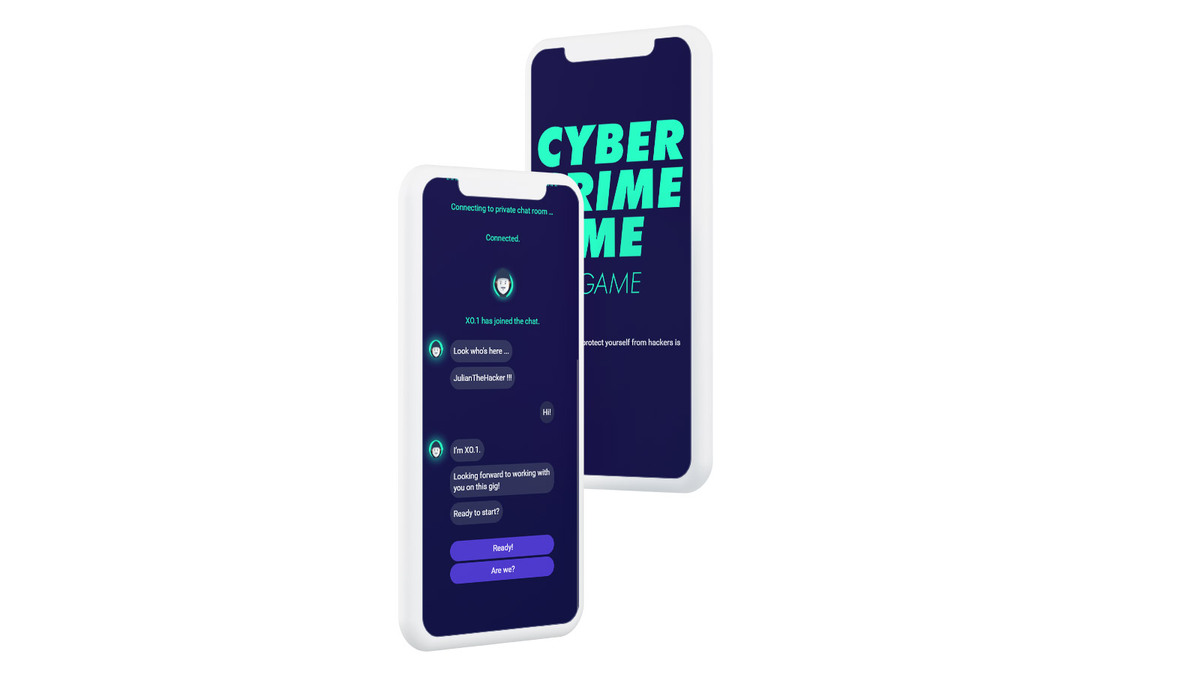
A normally dry compliance topic is brought to life by allowing the learner to learn about the risks of cyber crime and how to protect data in a novel way.
In Summary
By following the above steps to making compliance training more engaging, you can help to ensure that the content is really absorbed in order to manage risk.
You’ll also help to make learning part of the culture within your organisation, leading to employees being happy to - even seeking - personal and professional development opportunities.

The Role of Compliance in Digital Learning Transformation
Get to know more about the five benefits of how compliance training can make digital learning transformation a fundamental part of a progressive, digitally-savvy organisation.

Don’t call it compliance!
Compliance training - the term alone is a red flag for many employees. We give some tips how to create an interesting training instead.
Contact person

Fosway Group: "Focus On Your Learning Ecosystem"

Fiona Leteney
Fiona Leteney is the Senior Analyst for Learning Systems at Fosway Group, Europe’s #1 HR industry analyst. She has worked in the learning technology market since 2000, gaining a wealth of experience by either selling, implementing or managing learning solutions in a corporate context.
Terms such as LMS, NGLE and LXP are confusing for corporate buyers. The definitions aren’t clear and it’s hard to differentiate between the different types of technologies. That’s why in the February 2020 Learning Systems 9-Grid™, Fosway took the bold decision to reclassify Learning Systems as Suites and Specialists with the aim of more clearly and accurately defining the market. Organisations have always had a learning ecosystem of platforms and tools but the acceleration to digital-first ways of working and hybrid working require the ecosystem to be optimised to deliver impact and value.
This blog will explain the reasons why:
- The new classification is more reflective of the current learning systems market
- The ecosystem concept of combining suites and specialists is the way forward
- The connectivity of the ecosystem and circulation of data is more important than ever before

LMS & LXP labels no longer reflect the current learning systems market
Market perception is that the LMS represents traditional ‘tick-box’ compliance and ‘click-next’ content. A new label (LXP) encouraged the market to look to a fresh new future. However, over recent years the lines between the two types of system have blurred and those vendors who thought that formal learning and LMS functionality could be ignored were mistaken. This is true, particularly in the mid-market, where buyers can neither afford nor justify the purchase of more than one learning system. As the market now both accepts and adjusts to the Fosway classification of Suites and Specialists, some vendors have re-evaluated their target positioning and where they fit in the corporate ecosystem. Some specialists have prioritised innovation over backfilling core learning management functionality, often preferring to partner with other Suites instead. Suites have added LXP capability, whatever they perceive that to be.
The ecosystem concept of combining suites and specialists is the way forward
Learning technology has always been an ecosystem with many components, including the Learning Systems (LS), sources of HR data, virtual classrooms, authoring tools, learning content and other resources. Seamless integration has often been an issue, many corporates choosing not to tackle the problem, leaving them as separate, stand-alone technologies and making a single source of truth for data an unreachable goal. This is no longer a viable option even for learning at the mid-market level. However, even more integrations are required as an organisation gets larger, more complex and their core LS does not deliver the depth of functionality in specific areas. So, platforms with specialisms such as training resource management, curation, extended enterprise or programmatic learning might be added to the learning ecosystem.
However, the ecosystem is expanding beyond learning, connecting with the HR System(s) for the learner’s profile has always been a priority but now the lines are also blurring between communication, learning, performance and talent. It’s all about the data flow and the term we use to describe the ability to do this well is ‘Ecosystem-ness’. Vendors will rightly say that APIs solve this problem, but building integrations require integrators, i.e. developers and other experienced people to build and maintain them. In a complex company, that is expensive and non-trivial. In smaller companies it is impossible as they lack the resources and budgets to develop their own integrations. The more that Ecosystem-ness is of the out-of-the-box, the better off all buyers will be.

To deliver value & impact requires ecosystem connectivity and circulation of data
The ecosystem provides the opportunity to deliver a new level of learning impact. Take this scenario for example: an employee is recruited because of their existing skills which are noted, their learning through the onboarding process takes care of the gaps and time-to-value in the new role is measured. Successful performance is demonstrated and rewarded during the delivery of internal or external projects. Awareness of new opportunities for further development and upskilling are at the learner’s fingertips along with collaborative assignments or individual coaching. The manager has access to their team’s progress to ensure intervention is possible when necessary. The organisation can recognise the skills gaps across the whole organisation and initiate reskilling for competitive advantage and growth. Learning is at the centre of this and at every stage!
But none of this is possible in an effective efficient way without all the various HR, talent and learning system suites and specialists being integrated to ensure the data flows unimpeded. Which is why the ability for a vendor to demonstrate ecosystem-ness is crucial.
And if all this can take place behind the scenes, mostly hidden from view and the employee has access to everything wherever they are working on a day-to-day basis then we’ve cracked it!
Find out more about the Fosway 9-Grid™ for Learning Systems and read the full report here and you can contact Fiona via @fionaleteney or @fosway on Twitter and LinkedIn.
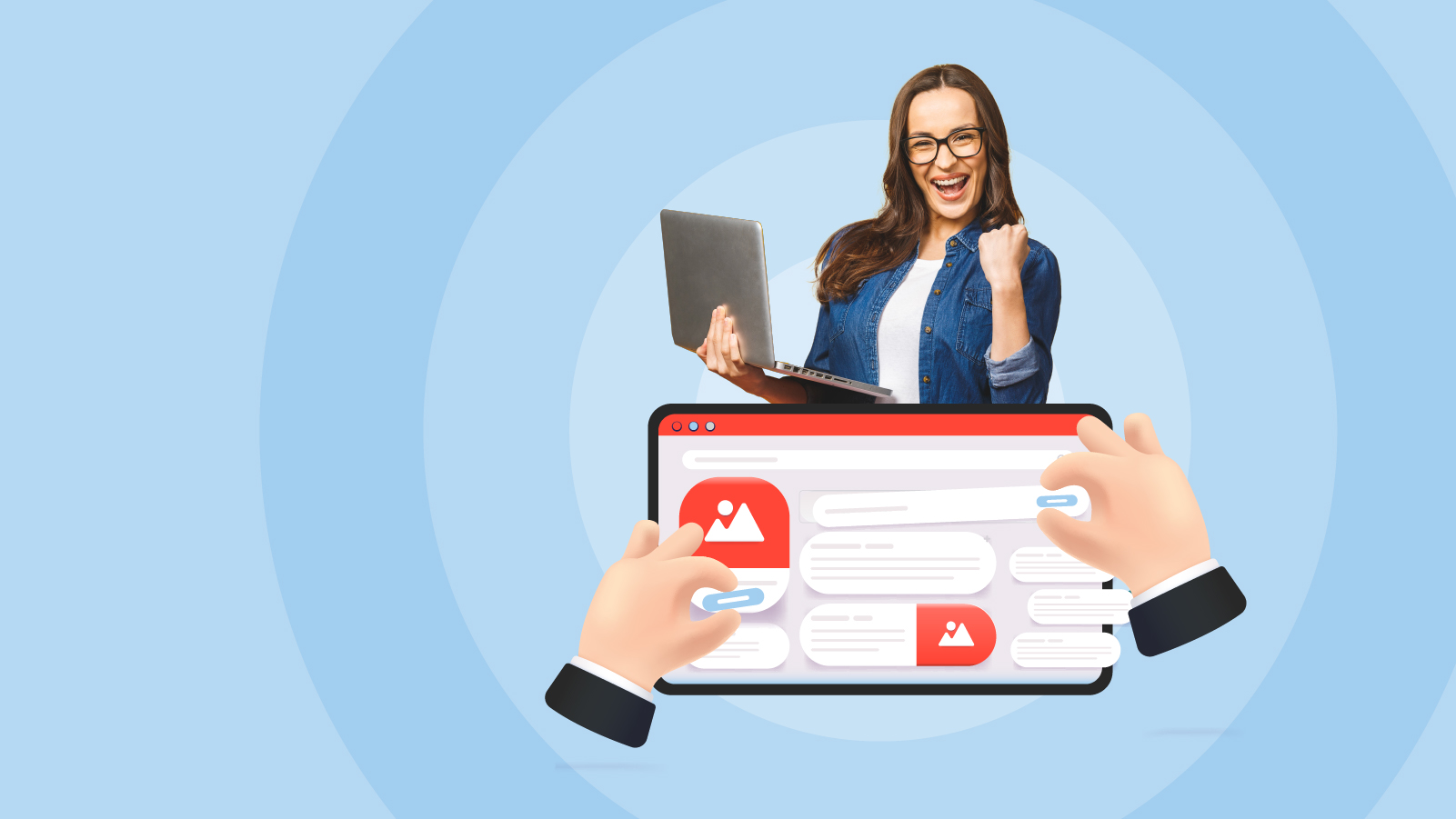
How to create the perfect learning experience
The best learning experience for your organisation is tailored and personalised to your needs and wishes. How do you create the perfect environment?

What do you need for the ideal learning ecosystem?
How do you combine cutting-edge technology, compelling content and an effective strategy to create the ideal learning ecosystem?
